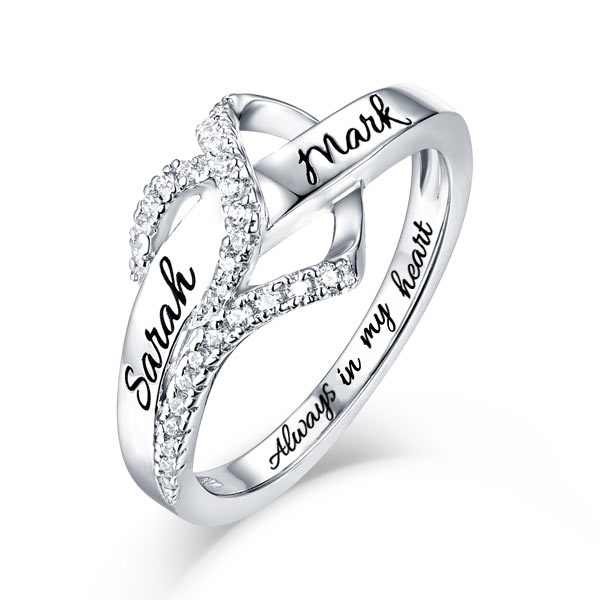Jadeite is distinguished from other types of gemstones by its own gentle and spirit, rich colors and hard texture. It has long formed a jade culture with national characteristics and extended a variety of jade art works. Every piece of splendid jade works carries the exploration and accumulation of the ancients and embodies the spirit and wisdom of the predecessors. Nowadays, the scarcity of jade materials, the development of the industry and the increasingly close international exchanges force designers to have a broader vision and more comprehensive professional training when creating jade customized necklace jewelry.
The inlay process is generally divided into Jewel CAD, metal modelling, computer spraying wax, casting, welding, molding, inlaying, polishing, electroplating and the like. Jade carving originated from the good things and emotional sustenance of auspicious blessings. It is a kind of cultural inheritance and the deposition of art. Based on this, the jade inlay is designed by the designer’s fancy to give jade decoration and wear practical functions.
As an ancient traditional handicraft, inlay occupies an important position in the jewelry industry due to its fine production function. China’s inlay art has a long history and unique style. As an ornament, the inlaid history of jade monogram necklace begins with the Qing Dynasty and the Empress Dowager Cixi.
The old style jade inlays are mostly inlaid with gold. The modern style inlays are mainly made of K gold and platinum with tiny diamonds. Through the shining, radiant and fascinating light, the jade is colorful and luxurious, delicate and charming. The combination of traditional and modern, classical and fashion represents the fashion trends of jade. The main inlay styles are rings, earrings, pendants, necklaces, bracelets, brooches and so on.
Modern people’s demand for jade family necklace jewelry and aesthetic standards have also undergone many changes. The mosaic jadeite has become more fashionable, and the processing technology has also been developed. The fusion of western gemstone jewelry culture and oriental jade culture makes it rich in styles. The benefit of doing so is to foil the emerald bright green, and the jade itself also played a role in the protection.
1. Wax setting
Wax setting is also a kind of inlaid stone. It is usually inlaid with zircon or spar. It is simpler than other inlays and can be used quickly.
2. Claw setting
This is the most common and relatively simple process in the inlay process. The claw setting is a method of fastening the jade to the bracket (rabbet) with metal claws. The claws are divided into prong-solitaire and cluster setting. The prong-solitaire is only placed on the bracket with a larger gemstone; it sets off and reflects the brilliance and value of the main stone cute necklaces for girlfriend.
3. Channel setting
The channel setting is also known as the tension setting. It is a kind of mosaic method in which the slot position is placed on the side of the rabbet, then put the gem into the slot position and press firmly. This method is commonly used in the accessory stone inlays of high-end personalized birthstone necklace jewelry. In addition, some square, trapezoidal jade or diamonds are mounted with a strong fit.
4. Bezel setting
The bezel setting is a technique of encircling the gemstones with metal edges. It is used for some larger gemstones, especially for arch face gems, because the large arch face gems are set with prong setting cheap necklaces. The process is not easy to fasten, and the long claws affect the overall appearance.
5.Nail setting
Pave setting is to use the small pins on the edge of the jade to fix it on the drill bit. It is mostly used for the inlay of the accessory stone in the cluster setting, and its arrangement is various. Common arrangement has line form arrangement, face form arrangement, regular arrangement, irregular arrangement. According to the number of pins, it is divided into two nails setting, three nails setting, four nails setting and pave setting.
6. Stuffed setting
The stuffed setting is a process of extruding a ring of metal on the edge of the bezel and pressing the gemstone. This type of setting is mostly used for small gemstones.
Many people have two wrong ideas about the inlay of jade back cover: First, the high-end jade is not sealed back; second, the back cover is set to cover up defects. These are very one-sided statements. In fact, there are three reasons for the jade to back cover: The first is safety. The K gold-plated back cover can protect the jadeite stone from being easily damaged, and it is easy to wear. The tightly-wrapped package is also safer, and the probability of falling off the main stone is lower. The second is beautifying. The K gold-plated back cover allows the emerald color to be concentrated and looks more beautiful. The third is for cleaning. The back cover can keep the bottom clean, and it is not easy to hide dirt. Through the rigorous testing of the infrared spectrometer, it is possible to confirm whether it is a natural A product even if the back cover is the same.


